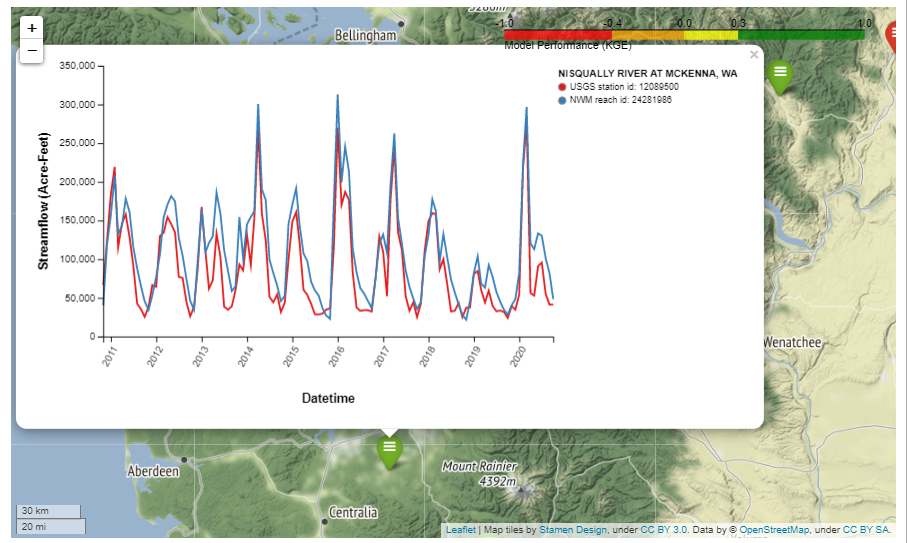Your cart is currently empty!

Scaling Environmental Applications: Lessons from Regional to National Tools
—
Environmental challenges demand solutions that can grow beyond their original scope. While local environmental solutions often serve as valuable proving grounds for innovative approaches, transforming these regional successes into national or global platforms can be challenging. It isn’t just about adding more data points or users. It’s about thoughtful evolution at every level. Whether you’re a developer, environmental scientist, or project manager, there’s something to learn from how successful applications navigate this growth.
The evolution of the Community Streamflow Evaluation System (CSES) offers valuable insights into scaling environmental applications from regional projects to national resources. Its journey offers practical insights for anyone working at the intersection of technology and environmental science.
Design Principles That Scale
CSES began as a targeted tool supporting water supply forecasting in Utah’s Great Salt Lake Basin. Its initial success stemmed from efficient data flows, focused user interfaces, and consistent performance. As demand grew, these design principles needed adaptation. Expanding from dozens to thousands of monitoring sites required a fundamental rethinking of the data architecture to maintain responsiveness across a broader user base.
Data Pipeline Optimization
The expansion of CSES presented significant data management challenges. Evaluating hydrological models across more than 5,000 USGS sites necessitated robust data pipelines capable of processing and serving extensive datasets daily. The team prioritized optimized data storage and retrieval systems to ensure the platform could scale efficiently without compromising reliability or speed. Regional data handling approaches had to be redesigned for national coverage.

Interface Refinement
The growth in scope demanded evolution in information presentation. While simple lists or maps worked for a limited number of sites, the expansion to thousands required greater clarity and accessibility. The CSES team implemented intuitive filtering mechanisms, layered visualizations, and intelligent defaults to help users quickly locate and interpret data—whether examining a single river or an entire watershed. User experience design became increasingly central to maintaining the platform’s effectiveness.
Technical Infrastructure
A solid technical foundation underpinned this successful scaling. The CSES team utilized established data standards, cloud-based processing, and modular code architecture to ensure sustainable growth without major system overhauls. Early investments in scalable technologies helped avoid potential bottlenecks.
Continuous Evolution
Scaling environmental applications represents an ongoing process rather than a one-time achievement. The CSES experience demonstrates that success comes from designing with growth in mind from the beginning and adapting thoughtfully as requirements increase. By focusing on smart architecture, efficient data handling, and responsive user interfaces, teams can transform local solutions into effective national tools.
Building scalable environmental applications is a continuous journey. The CSES experience provides a practical roadmap for developing solutions that address current needs while remaining adaptable for future challenges.
Remember that scaling is a journey, not a destination. By learning from successful implementations, we can build tools that grow alongside the environmental challenges they address. Learn more about Tethys Platform and its capabilities today!

Leave a Reply